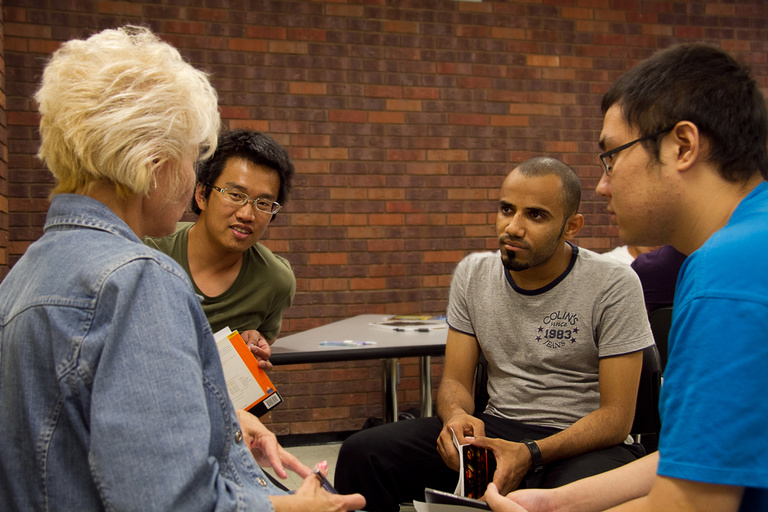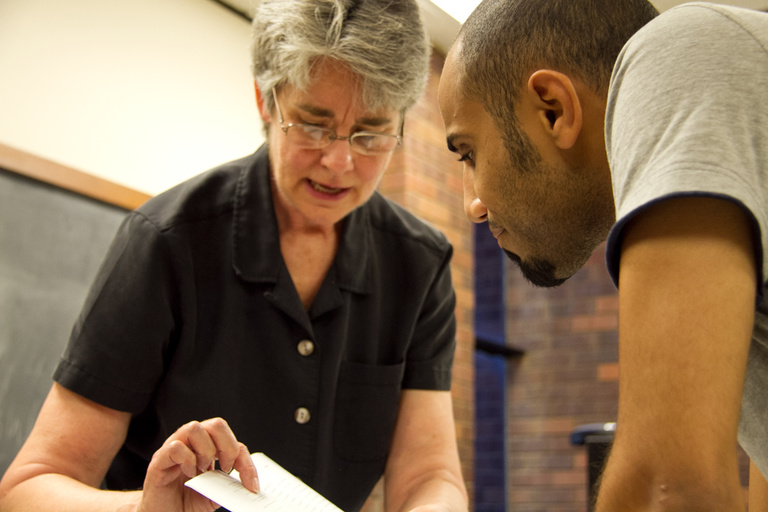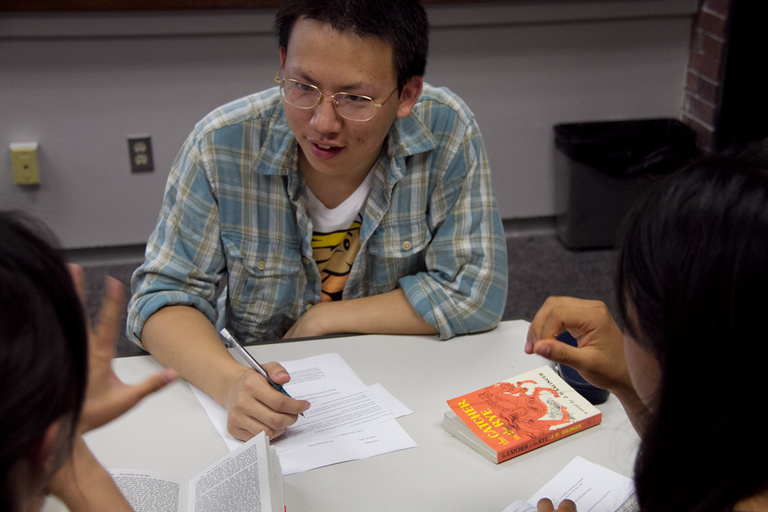Jin-A Park can order a complicated coffee with perfect English grammar, ask an American classmate to lunch with ease, and keep up with her linguistics professors’ mile-a-minute lectures on morphoxyntax and phonological theory—but, that certainly wasn’t always the case for the South Korean native.
When she first came to the U.S. to attend high school, she had limited English and avoided any social situation that required speaking.
“I didn’t know any English, any American culture,” she says (though, to be fair, she did have some English, having studied the language since grade school). “All my high school classes were in English, but I still needed classes on how to speak English.”
When she entered the University of Iowa in 2011, she expected to be thrown directly into a degree program, where, as in high school, she’d have to sink or swim. But instead, she encountered a network of teachers and administrators committed to supporting students who speak English as a second language.

Maureen Burke directs the College of Liberal Arts and Sciences’ English as a Second Language (ESL) Programs, which provide ESL support for the UI’s approximately 3,000 international students for whom English is a foreign language.
Though most international students learn English through their home countries’ school systems, much of this education, says Burke, is geared toward passing one of the high-stakes language exams required for admission to U.S. universities, such as the Test of English as a Foreign Language (TOEFL) or International English Language Testing Services (IELTS).
“Sometimes students who do well on those tests find it difficult to use the language in any other environment. They’re taught ‘use this phrase in this kind of situation,’ and they memorize that,” Burke says.
As a result, she says, many students arrive unprepared for work in dynamic U.S. college classrooms.
Measuring English proficiency
That’s why the UI requires almost all students whose first language isn’t English to take the English Proficiency Evaluation or “EPE,” an on-campus exam involving both written and oral components developed and administered by the college’s ESL Programs instructors. Burke describes the EPE as a “check” on standardized proficiency tests, which can’t provide a complete picture of a student’s language skills or readiness for coursework at a particular school. And in fact, 85 to 90 percent of international undergraduates admitted to the UI—despite having the requisite test scores—demonstrate a need for additional English language coursework.
“The goal of our ESL courses is simply to help students acquire the language skills they need to be successful in their academic endeavors at Iowa," Burke says. "That means being proficient enough to understand lectures and take notes, participate in class discussions, write academic papers, and study without being hindered by language problems.”
Improving English in class and out
According to their EPE results, students may be required to complete any (or none) of the following 3-credit courses alongside their regular coursework: ESL Listening Skills, Academic Oral Skills, Grammar, Academic Writing Skills, and Reading Skills.
Those whose EPE scores indicate a need for more intensive language training begin their ESL coursework in the Iowa Intensive English Program—a popular language program in which many non-native-English-speakers enroll before pursuing degree programs in the U.S.

Mingjian Shi, a UI freshman from China, admits that he was frustrated by his placement in two ESL courses but quickly recognized their value.
“In China, you can study English, but you don’t have the chance to familiarize yourself with an English atmosphere. But in ESL classes, you speak English daily and can get used to the patterns of speaking and listening,” he says.
Jin-A, who plans to become an ESL teacher herself, agrees.
“ESL classes help you to be ready. The teachers here are very good—they’re careful and make sure you understand. It’s so important because English is how you succeed here, academically and socially—everything works in English,” she says.
Unfortunately, says Burke, many students perceive their placement in ESL courses as a punishment, despite the demonstrated necessity of the classes, the importance of English fluency to academic success at the UI, and proof of the courses’ success (the UI’s international student retention rate is an impressive 86 percent).
Still, both Mingjian and Jin-A acknowledge that to really become proficient in English, you’ve got to practice, practice, practice outside of the ESL classroom.
“We tell our students, get out there and use English as much as you can. Join a club, live in a residence hall, try to get up your nerve to start up a conversation. And take out those earphones, so you can listen to the English around you,” Burke says.
In addition to providing language instruction, every ESL course at Iowa includes a cultural orientation to the American educational system, familiarizing students with everything from plagiarism, grading, and classroom conduct to the often novel concepts of class participation and small group discussion—which, though central to U.S. classrooms, many international students find daunting, culturally as well as linguistically.
A nationwide trend
The number of international students studying in the U.S. is at a record high—720,000—a figure most admissions officials attribute to China’s newly flourishing economy. Where the majority of international students were graduate students as recently as 2009, however, undergraduates now make up nearly 50 percent of the international student population. This huge increase has had many schools scrambling to meet an increased demand for services like ESL courses, writing tutoring, and academic advising, since undergraduates are typically less prepared for international study than their graduate-level counterparts.
At the UI, an International Student Committee staffed by administrators from the Provost’s Office, Admissions, Housing, International Student and Scholar Services in UI International Programs, ESL Programs, and advising offices across campus monitor international student enrollment to ensure that the UI can offer the services and English classes its students will need. Thanks to the committee, says Burke, “the UI has been prepared, and the students have been well-served.”

With international enrollment numbers that don’t show any signs of slowing, ESL programs anticipates adding to its 30-member faculty and offering additional classes in the coming semesters. But, cautions Burke, who is careful to keep ESL classes small despite the demand, “we don’t want to give up our quality. Like all the units on campus, we want to grow wisely and make sure that the students remain our first priority.”
For more information about ESL programs, visit clas.uiowa.edu/esl.